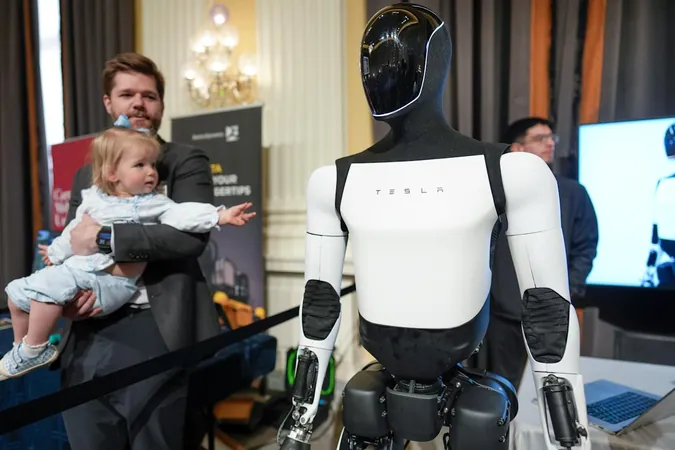
U.S. Robotics Industry Demands a National Strategy to Outpace China's Advancements
2025-03-27
Author: Jessica Wong
Introduction
In a critical move to maintain its leadership in robotics, American companies are advocating for a comprehensive national robotics strategy. This includes the establishment of a dedicated federal office aimed at promoting the industry, particularly as China prioritizes the development of intelligent robotics as part of its national agenda.
Industry Advocacy
On Wednesday, key representatives from industry giants like Tesla, Boston Dynamics, and Agility Robotics convened with lawmakers on Capitol Hill. Their goal was to demonstrate innovative products and to urge the U.S. government to implement policies that would enhance the competitive edge of American robotics firms in the global landscape.
Historical Context
Jeff Cardenas, co-founder and CEO of Apptronik, a humanoid robot startup based in Austin, Texas, emphasized the historical significance of American innovation in this field. He highlighted that General Motors introduced the first industrial robot back in 1961, but since then, the U.S. has fallen behind countries like Japan and those in Europe, which continue to dominate the industrial robotics sphere.
The Next Robotics Race
Cardenas remarked, 'The next robotics race will be powered by artificial intelligence and is open for anyone to win. The U.S. has a formidable chance, given our leadership in AI and the development of high-quality robots. However, a national strategy is crucial for sustaining our momentum and securing our position at the forefront.'
Support from the Association for Advanced Automation
The Association for Advanced Automation supports this call for a structured national approach. They argue that a well-defined national strategy would enhance production capabilities among U.S. firms and facilitate the broader adoption of robots, which serve as the 'physical manifestation' of AI technology. The organization warned that without such leadership, the U.S. risks losing not only the robotics race but also its competitive edge in AI technology.
Proposed Initiatives
To foster growth in the sector, the association proposed several initiatives, including tax incentives for businesses, federally funded training programs, and increased funding for both academic research and commercial innovations. They stress the urgent need for a federal robotics office to address the escalating global competition and the sophistication of emerging technologies.
Political Insights
Illinois Representative Raja Krishnamoorthi shared his insights, noting that while the U.S. is currently ahead, it must remain vigilant against the rapid advancements of Chinese companies, which are increasingly allocating substantial resources to robotics development: 'We need to preserve our innovation and sustain our culture of entrepreneurship.'
Challenges in Manufacturing
Within the competitive landscape, Jonathan Chen, a manager at Tesla's Optimus Engineering, spoke on the crucial element of manufacturing capabilities in the national robotics race. He questioned, 'We can create the robots, but the real challenge lies in who will scale them effectively for widespread use.'
Conclusion
As the world of robotics continues to evolve rapidly, the urgency for a cohesive national strategy has never been more apparent. The stakes are high, and only time will tell whether the U.S. can reclaim its pioneering status in this vital industry.


 Brasil (PT)
Brasil (PT)
 Canada (EN)
Canada (EN)
 Chile (ES)
Chile (ES)
 Česko (CS)
Česko (CS)
 대한민국 (KO)
대한민국 (KO)
 España (ES)
España (ES)
 France (FR)
France (FR)
 Hong Kong (EN)
Hong Kong (EN)
 Italia (IT)
Italia (IT)
 日本 (JA)
日本 (JA)
 Magyarország (HU)
Magyarország (HU)
 Norge (NO)
Norge (NO)
 Polska (PL)
Polska (PL)
 Schweiz (DE)
Schweiz (DE)
 Singapore (EN)
Singapore (EN)
 Sverige (SV)
Sverige (SV)
 Suomi (FI)
Suomi (FI)
 Türkiye (TR)
Türkiye (TR)
 الإمارات العربية المتحدة (AR)
الإمارات العربية المتحدة (AR)